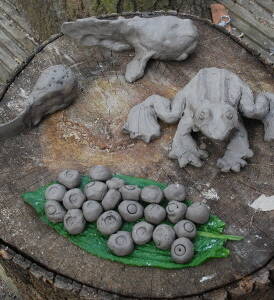
Clay frog life cycle
A spring clay craft activity to help explore a frog life cycle.
Read More about Clay frog life cycleA guide to all things froggy: information, observing, craft ideas & frog products.
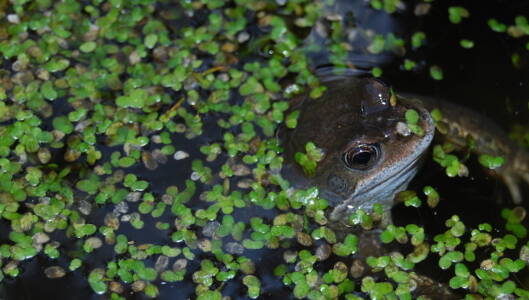
Welcome to Muddy Faces Inspirations: bringing together activities & ideas with a specific theme, to inspire your time outdoors playing, learning & connecting with nature. Follow the highlighted links to take you to our step-by-step activity guides.
At Muddy Faces we love frogs! Seeing frogspawn in the ponds is a strong sign that spring is well under way and warmer times are due to follow. If you work with children who find frogs fascinating here are some ideas and resources to fuel that froggy interest.
Visit our reptiles & amphibians links section for a selection of really informative external websites.
This activity has been provided by

Consider the environmental impact of preparing, carrying out & completing this activity. Could this impact be reduced? Specific considerations for this activity could include:
Follow your usual operating procedures and carry out appropriate risk benefit assessments.
Some considerations particular to this activity include:
Follow your usual operating procedures and carry out appropriate risk benefit assessments.
Some considerations particular to this activity include:
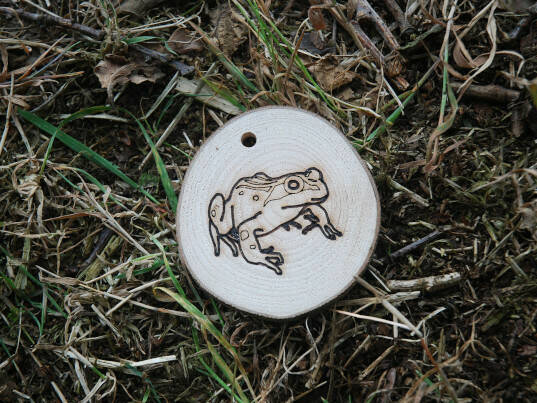
Eating – frogs use their sticky, muscular tongue to catch and swallow food. Unlike humans, their tongue is not attached to the back of its mouth, but is attached to the front. This enables the frog to stick its tongue out much further.
Drinking – instead of drinking, frogs soak water into their bodies through their skin.
Breathing – frogs breathe through their nostrils, whilst also absorbing about half the air they need through their skin. They need to keep their skin moist to enable themselves to breathe;
they secrete mucous to help do this – that is why frogs are often regarded as slimy.
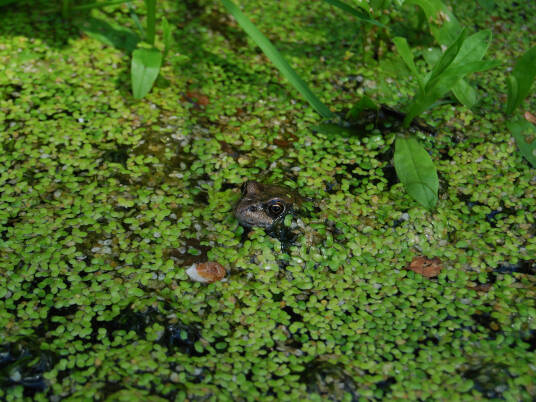
Observing a tadpole’s development is a fantastic learning opportunity for children. We recommend The Field Studies Council Field guide to keeping frog tadpoles for advice on keeping tadpoles.
Breeding season (March – May) is the time frogs and toads are most active. They can be spotted near ponds and other standing water, generally taking shelter on land during the day and coming out to feed at night.
Find out lots more about observing on the The Amphibian and Reptile Conservation Trust (ARC) website.
Remember to look at the environmental considerations section (above) to find more information about observing frogs in the wild.

Clay frog life cycle
A spring clay craft activity to help explore a frog life cycle.
Read More about Clay frog life cycle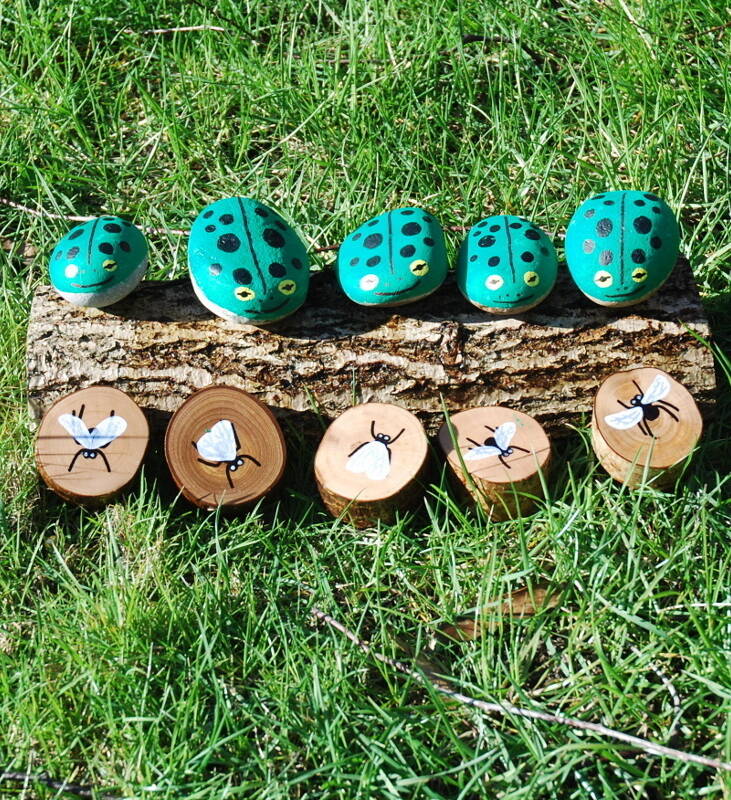
5 little speckled frogs
Perfect outdoor early years maths resource that's fun to make and play.
Read More about 5 little speckled frogsWooden discs are a great canvas to get creative. A simple image painted on using acrylic pens (stays on in all weathers) can provide the perfect frog to play with outdoors.
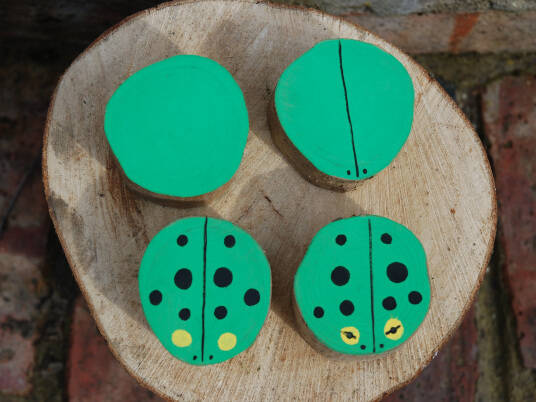
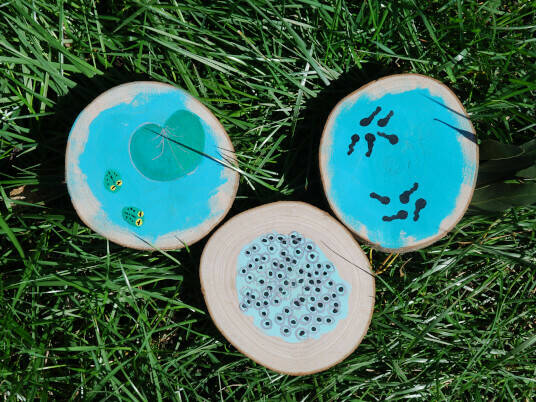
Extend the above activity and create your own wooden disc frog life cycle.
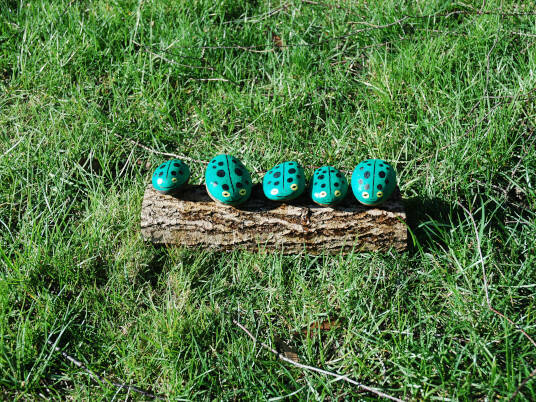
Like the wooden discs, pebbles can provide the perfect canvas to create your very own frogs.
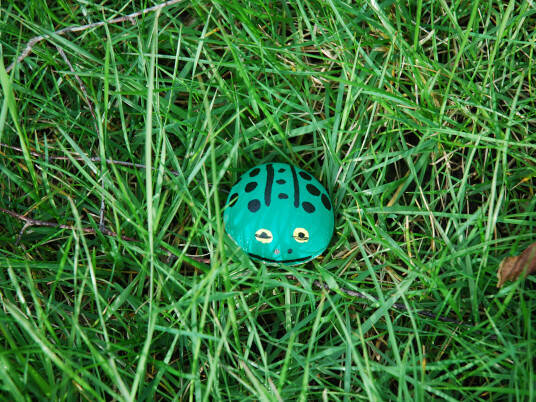
Find a hiding place for your frog and get a friend to see if they can find it. A simple game but so much fun!
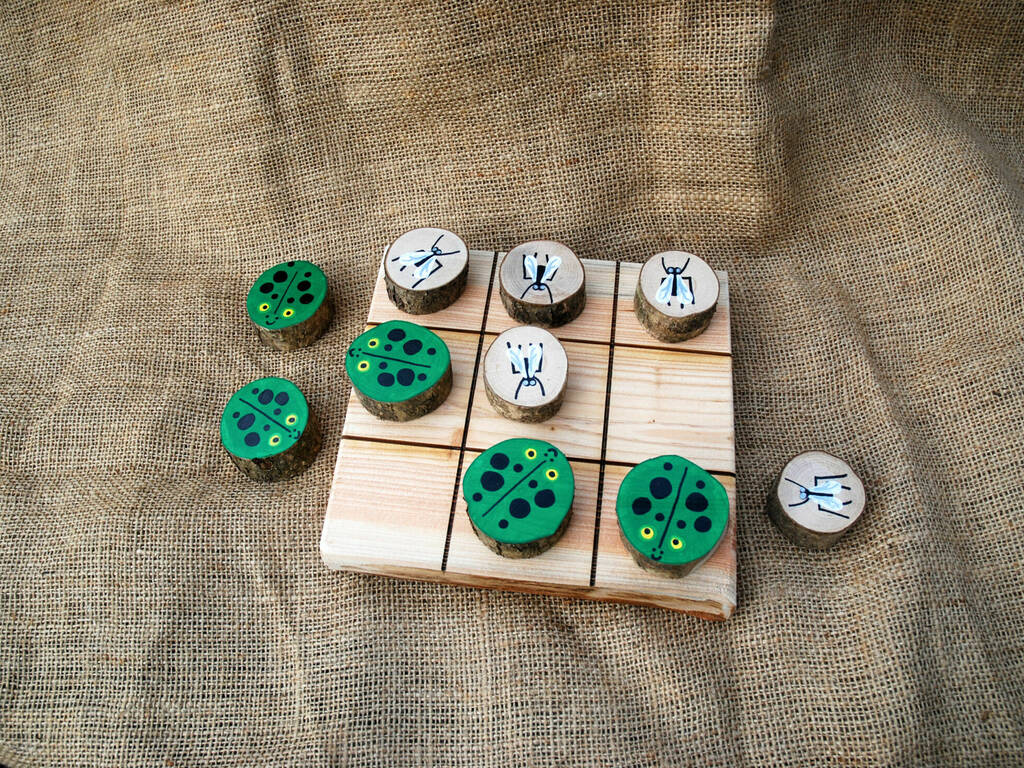
Paint and create your own tic tac toe (aka noughts & crosses) and see if the frogs can eat the flies.
5 little tadpoles
Five little tadpoles swimming near the shore.
The first one said, “Let’s swim some more”
The second one said, “Let’s rest awhile”
The third one said, “Swimming makes me smile”
The fourth one said, “My legs are growing long”
The fifth one said, “I’m getting very strong.”
Five little tadpoles will soon be frogs.
They’ll jump from the water and sit on logs.
Little green frog
Stick out your tongue on every 2nd “Mm” and open your mouth wide for any Aahhs!
Mm, mm went the little green frog one day,
Mm, mm went the little green frog,
Mm, mm went the little green frog one day,
And they all went mm, mm, aahh!
But!
We all know frogs go (clap)
Lah-dee-dah-dee-dah! (clap)
Lah-dee-dah-dee-dah! (clap)
Lah-dee-dah-dee-dah!
We all know frogs go (clap)
Lah-dee-dah-dee-dah!
They don’t go mm, mm, aahh!
A frog jumped into a big bucket of milk – how did it manage to get out?
A frog was hopping around a farmyard when it decided to investigate what was in a metal pail. Being a little too curious, he wanted to see what the white liquid in the pail was and oops he toppled into the pail half-filled with fresh milk.
As he swam about, trying to reach the top of the pail, he found that the sides of the pail were too high and steep to climb out. He swam down and pushed off the bottom of the pail but found it too deep. He kicked his legs as fast as he could trying to propel himself out of the pail.
Whatever he did he just couldn’t escape. But this frog was determined not to give up, and he continued to struggle. He kicked and squirmed and kicked and squirmed, until at last, all his churning about in the milk had turned the milk into a big hunk of butter.
The butter was now solid enough for him to climb onto it and get out of the pail.
Never give up!!
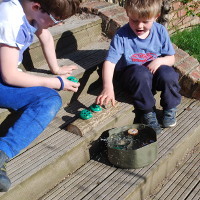
Our boys were not too interested in the song, but played for ages bombing flies (painted on discs) with froggy pebbles and trying to sink them. If you get it right (or cheat by placing a frog on top of a fly carefully), a frog pebble can hold a fly at the bottom of the bowl.
When the boys discovered the numbers on the bottom of the frogs they discussed lining them up in order and then jumping them into the pool one by one.
They soon returned to the splashing and fly-bombing frogs!

All you need equipment to go exploring ponds, rivers and streams, supporting STEM and children's understanding of the world.
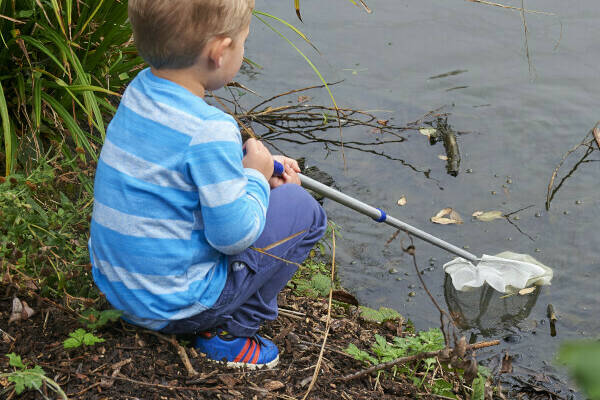
Pond guides
Ponds can be a brilliant resource for home, school, early years settings and Forest School. The learning opportunities are wide.
This page is divided into sub sections with links to pond guides; pond dipping; ponds & learning; pond safety.
Read More about Pond guidesDisclaimer: Muddy Faces cannot take any responsibility for accidents or damage that occurs as a result of following this activity.You are responsible for making sure the activity is conducted safely.